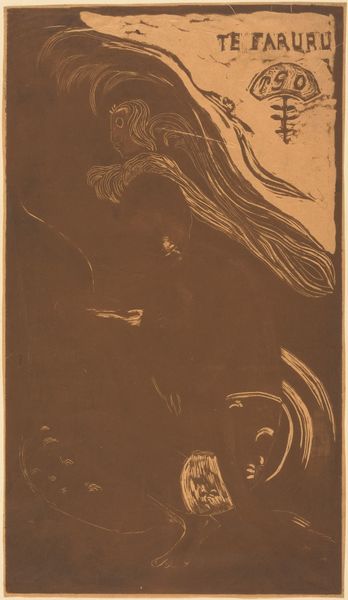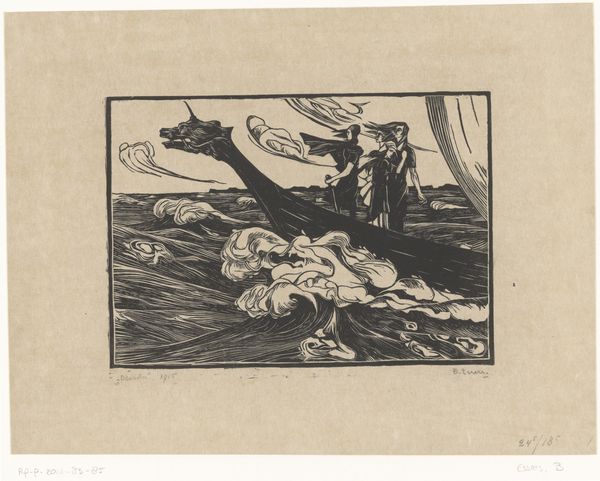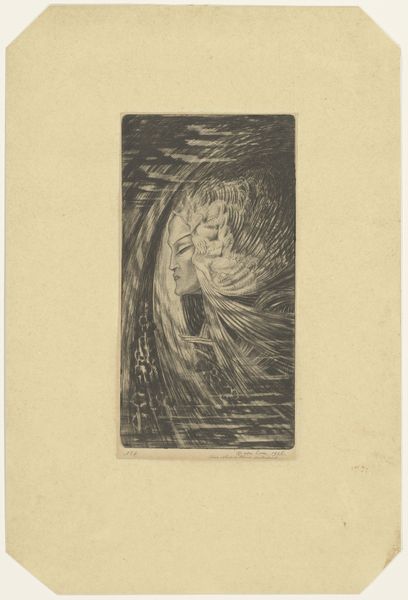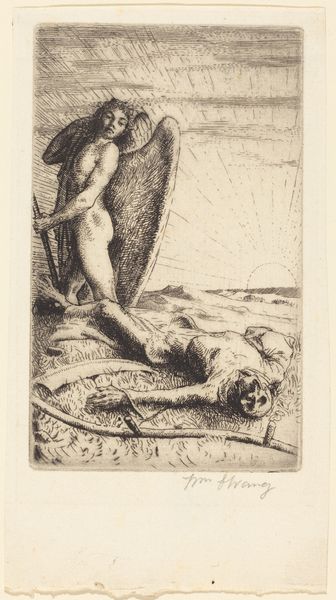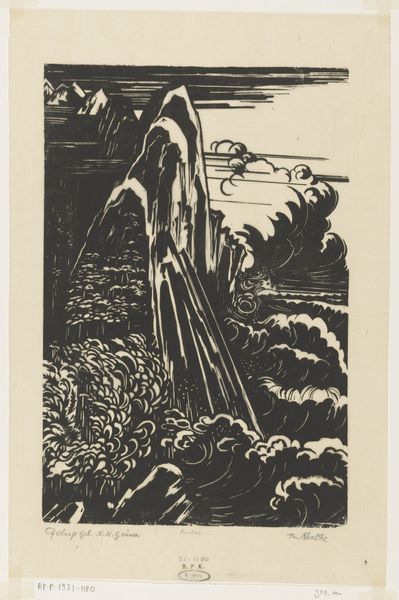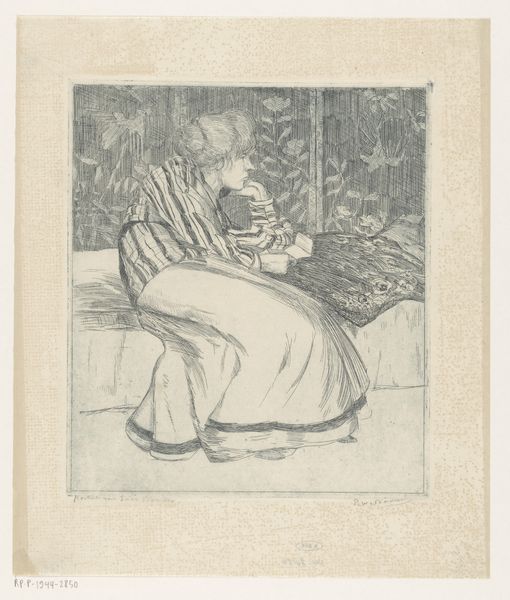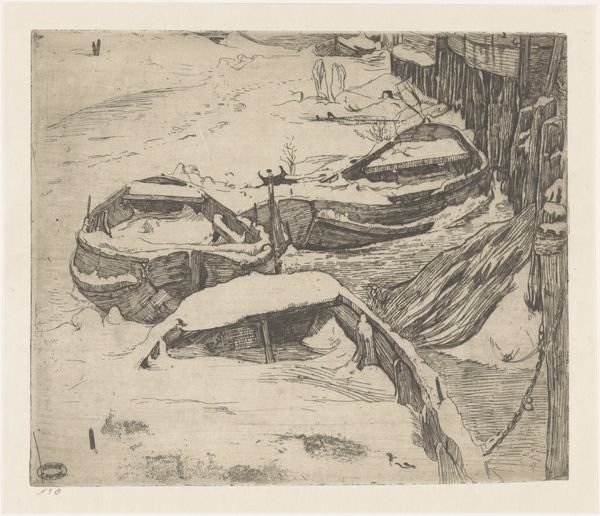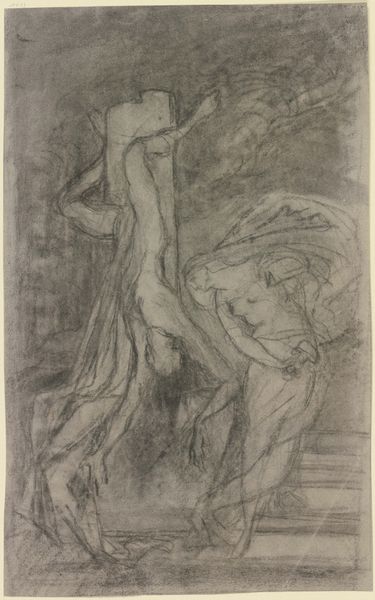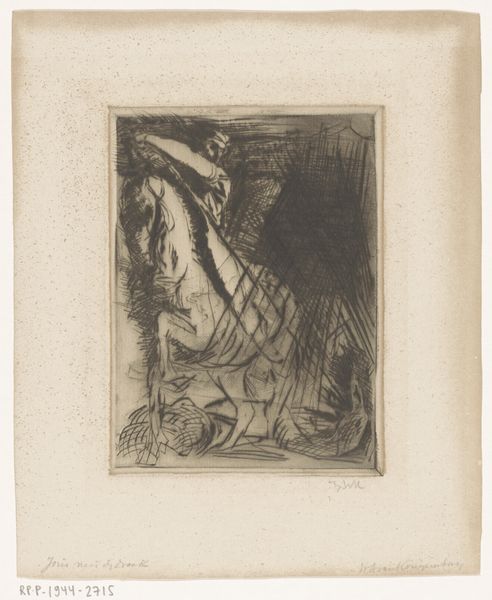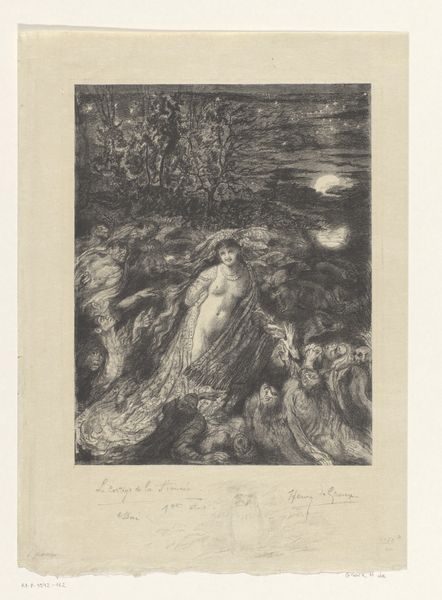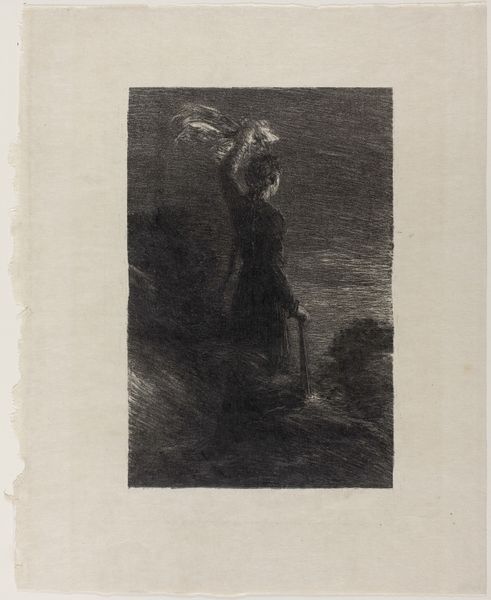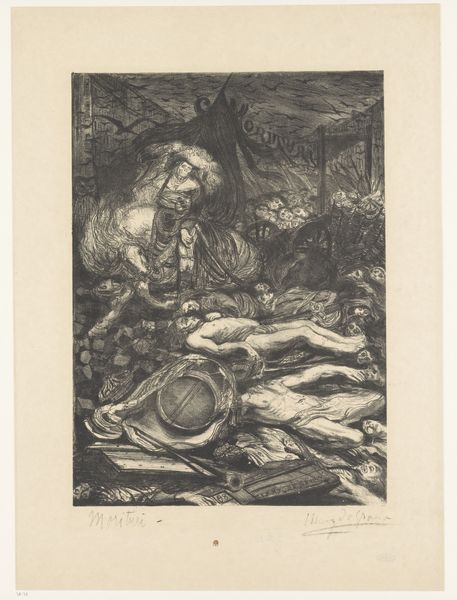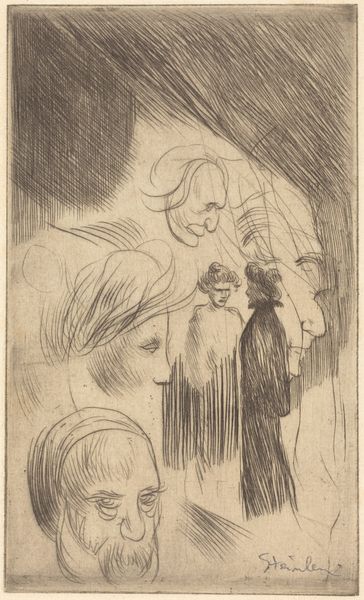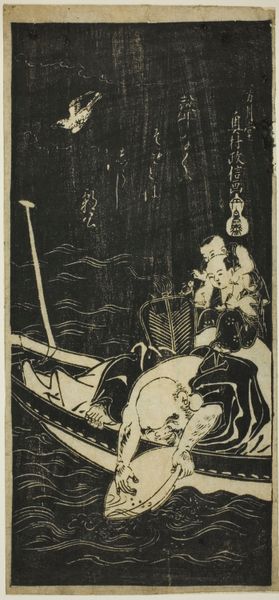
Dimensions: height 259 mm, width 200 mm
Copyright: Rijks Museum: Open Domain
Curator: Look at this powerful woodcut print from 1915, "Cuchulainn Fighting the Waves" by Bernard Essers. What strikes you? Editor: Immediately, I'm drawn to the sense of struggle, of overwhelming force. The thick lines and stark contrast between black and white create a really turbulent scene. It feels almost primal. Curator: Indeed. Essers chose to represent the Irish mythological hero Cú Chulainn. In one version of the legend, the hero goes into a battle rage and fights against the sea. Considering the historic context of its creation, it might be worth asking who gets memorialized as heroes and why? Editor: The way the waves are depicted is really interesting – almost like monstrous faces or spirits rising up. I see echoes of sea monster myths in the waves. I wonder what that symbolized for the artist? Curator: It’s worth noting that Cú Chulainn himself becomes almost monstrous in his rage. Essers probably had a good reason to choose the woodcut medium to depict the scene, to address notions of nationalism, trauma and masculinity. Editor: It certainly underscores the raw emotion. Also, observe how the spear almost bisects the entire composition, emphasizing this sense of imbalance, and struggle. The man appears fragile but the symbol makes him dominant. Curator: He's clearly grappling with immense forces, natural and internal. When looking at his other artwork, we might ask whether Essers was attempting to critique, endorse, or simply retell the established and circulated Celtic mythology. Editor: And for me, what persists is this depiction of rage. This enduring image taps into deep-seated fears about the unpredictable and destructive force of nature. The psychological intensity resonates even now. Curator: A testament to the lasting power of mythology, retold and reinterpreted through generations. Editor: Exactly. Art has that way of layering different epochs in a single instance. Curator: Well put! It allows us to remember symbols, struggles and histories.
Comments
No comments
Be the first to comment and join the conversation on the ultimate creative platform.
